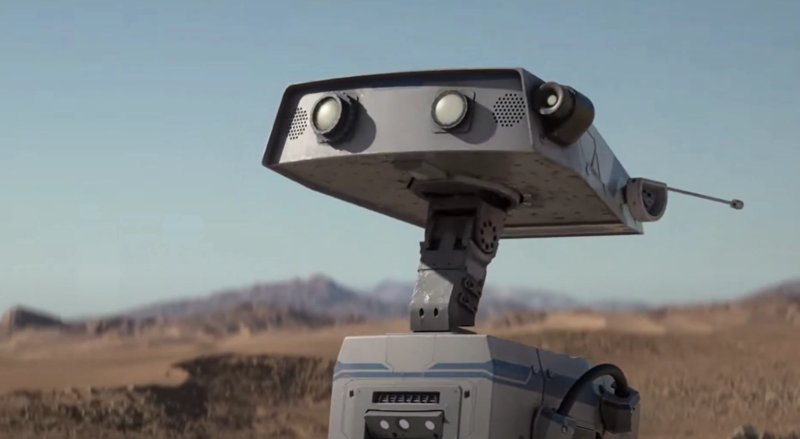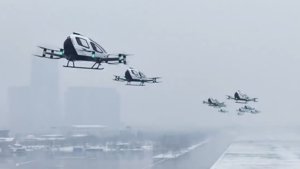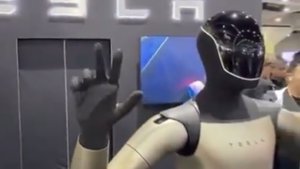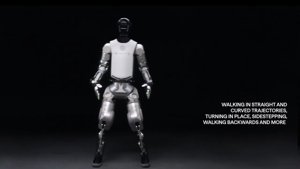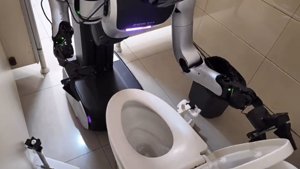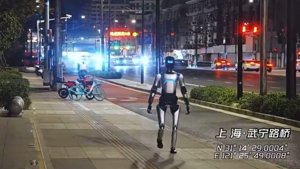The Robot Revolution is Open Source: NVIDIA’s GR00T N1 Ushers in the Age of Generalist Robotics
In the cavernous SAP Center in San Jose, amid the electric anticipation of thousands of developers and technologists, NVIDIA CEO Jensen Huang strode across the stage in his iconic leather jacket, pausing dramatically before declaring, “The age of generalist robotics is here.” That pronouncement, delivered at NVIDIA’s GTC 2025 conference on Tuesday, was more than hyperbole—it was the unveiling of what may become the Android moment for robotics: NVIDIA Isaac GR00T N1, the world’s first open humanoid robot foundation model.
A Brain for Every Body: The Democratisation of Robot Intelligence
Standing in stark contrast to the proprietary AI systems that dominate today’s headlines, GR00T N1 represents a fundamentally different approach to robot intelligence—one built on openness, accessibility, and a vision of robots that can generalise across environments and tasks without specialised programming for each scenario.
“With NVIDIA Isaac GR00T N1 and new data-generation and robot-learning frameworks, robotics developers everywhere will open the next frontier in the age of AI,” Huang told the packed arena in his keynote that stretched beyond two hours. The statement encapsulates NVIDIA’s ambitious strategy: create the underlying intelligence that will power the next generation of humanoid robots, then make it freely available to developers worldwide.
What makes this announcement particularly significant is how it addresses the most persistent challenge in robotics—the scalability of training data. As Jim Fan, NVIDIA’s Senior Research Manager and Lead of Embodied AI, explained in a LinkedIn post following the keynote: “We are on a mission to democratise Physical AI. The power of general robot brain, in the palm of your hand—with only 2B parameters, N1 learns from the most diverse physical action dataset ever compiled and punches above its weight.”
The Fast and Slow Thinking Robot
At the heart of GR00T N1 is a dual-system architecture inspired by human cognition—what NVIDIA calls thinking “fast and slow.” The approach draws from cognitive science theories that separate human thinking into two systems: intuitive, automatic responses and deliberate, methodical reasoning.
“System 2,” the slow-thinking component, uses a vision language model to perceive and reason about the robot’s environment and the instructions it receives, then plans appropriate actions. “System 1,” the fast-thinking component, translates these plans into precise, continuous robot movements at 120Hz execution rates. This architecture allows robots to handle complex tasks requiring both deliberation and fluid motion—picking up objects, manipulating them with one or both arms, and performing multi-step sequences.
In a demonstration that visibly excited the audience, Huang showed 1X’s Neo humanoid robot autonomously performing household tidying tasks using a policy built on GR00T N1. The robot’s fluid movements and apparent understanding of its environment highlighted the model’s potential for practical applications.
Breaking the Data Barrier with Synthetic Reality
Perhaps the most revolutionary aspect of NVIDIA’s approach is how it solves robotics’ fundamental data problem. While language models can train on the vast text corpus of the internet, robot learning has traditionally been constrained by the physical world’s limitations—a human demonstrator can only generate 24 hours of training data per day.
“Human demonstration data is limited by the number of hours in a day,” explained the narrator in NVIDIA’s GR00T N1 introduction video. To overcome this constraint, NVIDIA has developed frameworks to exponentially multiply real-world demonstrations into massive synthetic datasets.
Using the first components of the NVIDIA Isaac GR00T Blueprint, the company generated 780,000 synthetic trajectories—equivalent to nine continuous months of human demonstration data—in just 11 hours. When combined with real data, this synthetic dataset improved GR00T N1’s performance by 40% compared to using real data alone.
The approach uses three data sources: real humanoid teleoperation data (collected using systems like Apple Vision Pro for immersive control), large-scale simulation data (which NVIDIA is open-sourcing with over 300,000 trajectories), and what Fan calls “neural trajectories”—using state-of-the-art video generation models to “hallucinate” new synthetic data with accurate physics.
“Using Jensen’s words, ‘systematically infinite data’!” Fan noted in his post, referencing Huang’s characterisation of this approach to data generation.
The Star Wars Moment: Blue Steals the Show
In a moment that had the audience reaching for their phones, Huang introduced “Blue,” a charismatic robot that looks like it stepped out of a Star Wars film. The two-legged droid, reminiscent of R2-D2 but with its own distinct personality, walked around Huang, beeped expressively, and nodded its head to the audience’s delight.
“Tell me that wasn’t amazing,” Huang said to applause as Blue demonstrated its capabilities. The robot wasn’t just for show—it demonstrated NVIDIA’s new partnership with Google DeepMind and Disney Research to build a new open-source physics engine called Newton.
“We need a physics engine that is designed for very fine-grain, rigid and soft bodies, designed for being able to train tactile feedback and fine motor skills and actuator controls,” Huang explained. The Newton engine, built on the NVIDIA Warp framework, will be optimised for robot learning and compatible with simulation frameworks such as Google DeepMind’s MuJoCo and NVIDIA Isaac Lab.
Kyle Laughlin, senior vice president at Walt Disney Imagineering Research & Development, provided context for Disney’s involvement: “The BDX droids are just the beginning. We’re committed to bringing more characters to life in ways the world hasn’t seen before, and this collaboration with Disney Research, NVIDIA and Google DeepMind is a key part of that vision.”
The £10 Trillion Opportunity
The stakes in this robotics revolution are enormous. Huang described robots as “the next $10 trillion industry,” addressing global labour shortages estimated at more than 50 million people.
For companies developing humanoid robots, GR00T N1 offers a substantial head start. Rather than building robot intelligence from scratch, developers can leverage NVIDIA’s foundation model and customise it for specific robots or tasks through post-training.
Bernt Børnich, CEO of 1X Technologies, one of the early partners using GR00T N1, emphasised this advantage: “NVIDIA’s GR00T N1 model provides a major breakthrough for robot reasoning and skills. With a minimal amount of post-training data, we were able to fully deploy on NEO Gamma—furthering our mission of creating robots that are not tools, but companions that can assist humans in meaningful, immeasurable ways.”
Other leading humanoid developers with early access include Agility Robotics, Boston Dynamics, Mentee Robotics, and NEURA Robotics.
Cross-Embodiment: The Unexpected Twist
While humanoid robots are GR00T N1’s primary focus, Fan revealed an intriguing capability: cross-embodiment support. “We finetune it to work on the $110 HuggingFace LeRobot SO100 robot arm!” he wrote. This demonstrates that the foundation model’s benefits can extend beyond expensive humanoid platforms to more accessible hardware.
Fan’s excitement about this development was evident in his conclusion: “Open robot brain runs on open hardware. Sounds just right. Let’s solve robotics, together, one token at a time.”
The Road Ahead
The GR00T N1 model, training data, and task evaluation scenarios are now available on Hugging Face and GitHub, with the NVIDIA Isaac GR00T Blueprint for synthetic manipulation motion generation available as an interactive demo on build.nvidia.com.
For developers looking to work with these models, NVIDIA also announced the DGX Spark personal AI supercomputer, providing a turnkey system to expand GR00T N1’s capabilities for new robots, tasks, and environments without extensive custom programming.
The Newton physics engine is expected to be available later this year, further expanding the toolset for robotics developers.
The Democratisation of Physical AI
What distinguishes NVIDIA’s approach is its emphasis on openness and accessibility. By making GR00T N1 and its associated tools widely available, NVIDIA is positioning itself not as the sole builder of robot intelligence, but as the foundation layer upon which a global community of developers can innovate.
As robotics transitions from specialised industrial applications to generalist capabilities across diverse environments, NVIDIA’s open approach could accelerate innovation in ways similar to how open-source software transformed computing. The company that built its reputation on graphics processing for gaming is now laying the groundwork for a future where intelligent robots are as ubiquitous as smartphones today.
In the robotics community, reactions to GR00T N1 have been enthusiastic, though some scepticism remains about the current limitations of robot hardware. As one robotics company founder noted in response to an earlier GR00T update, “would be fine if the robot hardware was human comparable. Which it isn’t. The pain point is robots are clunky clumsy approximations and no where near human equivalent.”
Nevertheless, NVIDIA’s vision is clear: if robots are to become truly versatile and useful across the countless scenarios of human life, they need a generalist intelligence that can adapt quickly to new environments and tasks. With GR00T N1, that future just came a significant step closer.
“The age of generalist robotics is here,” Huang declared. For a field that has often over-promised and under-delivered, NVIDIA’s systematic approach to robot intelligence—combining foundation models, synthetic data generation, and open collaboration—represents perhaps the most credible path yet toward making that declaration a reality.
